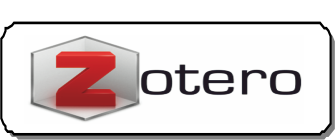The Concept of Malakah Ibn Khaldun in the Context of Teaching that Applies High Order Thinking Skills (HOTS)
Abstract
The high order thinking skills (HOTS) is a transformation in the education system in Malaysia this century in line with the implementation of the Malaysia Education Blueprint 2013-2025. The practice of implementing HOTS has outperformed the entire subject content concept by focusing on several HOTS theories in particular the Bloom and Taxonomy Marzano taxonomy. However, for the Islamic Education subjects based on the Quran and As-Sunnah, the implementation of this HOTS element needs to be translated through the basis of the Islamic Education Philosophy that puts the perfectional of the intellectual education as the main thrust in driving this thinking culture. The emergence of figures such as Ibn Khaldun, which speaks thoroughly of the mind-based concept of Malakah, has sparked diversity in the perspective of the understanding of HOTS understanding. For this reason, this study uses the analysis process by analyzing the literature by examining the contents of a synonymity or summarized in the meaning of the poor concept of Ibn Khladun in the context of the teaching of Islamic education subjects. The results of this study resulted in four basic concepts in the application of HOTS through the use of Malakah combined with the use of aql tamyizi, aql tajribi, aqal nazori and insaniyah fact. In general, the implementation of Islamic Education PdP which implements HOTS should focus on the process and philosophy of teaching that Ibn Khaldun has established to ensure that students' understanding, appreciation and practice assesses the requirements set out on the basis of the Islamic Education Philosophy. The conclusions of the findings of this study contribute the implementation of HOTS in Islamic Education Pedagogy should focus on the teaching process and philosophy established by Ibn Khaldun, ensuring that students' understanding, appreciation, and practice align with the requirements based on the Islamic Education Philosophy.
References
Al-Attas, Syed Muhammad Naquib. Risalah Untuk Kaum Muslimin. Kuala Lumpur: Institut Antarabangsa Pemikiran dan Tamadun Islam (ISTAC), 2001.
Al-Gahzali, Abū Ḥāmid Muḥammad ibn Muḥammad. Ihya’ ‘Ulum al-Din. Tahqiq: Muhammad Sa’id Muhammad. Qahirah: Dar al-Bayan al-‘Arabi, 2004.
Al-Na’miy, Abdullah al-Amin. Kaedah Dan Teknik Pengajaran Menurut Ibn Khaldun Dan Al-Qabisi. Mohd Ramzi Omar Penterjemah. Kuala Lumpur: Dewan Bahasa dan Pustaka., 1994.
Amir, Ahmad Nabil. “Pemikiran Ibn Khaldun Tentang Rasionalisme Islam: Suatu Penelitian Ringkas.” Ishlah: Jurnal Ilmu Ushuluddin, Adab Dan Dakwah 3, no. 2 (December 28, 2021): 201–16. https://doi.org/10.32939/ishlah.v3i2.94.
Anderson, Lorin W., and David R. Krathwohl. A Taxonomy for Learning Teaching and Assessing: A Revision of Bloom`s Taxonomy of Educational Objetives. Longman, 2001.
Bakar, Ibrahim Abu. Falsafah Ibnu Khaldun: Falsafah Dan Klasifikasi Ilmu. Kuala Lumpur: Institut Terjemahan dan Buku Negara, 2015.
Daniel, Marie‐France, And Emmanuelle Auriac. “Philosophy, Critical Thinking and Philosophy for Children.” Educational Philosophy and Theory 43, no. 5 (January 1, 2011): 415–35. https://doi.org/10.1111/j.1469-5812.2008.00483.x.
El-Rayes, Waseem. “The Political Aspects of Ibn Khaldun’s Study of Culture and History,” 2008. https://www.semanticscholar.org/paper/The-Political-Aspects-of-Ibn-Khaldun's-Study-of-and-El-Rayes/45732d4c2fcc357cef9016cb0bced2317d9021e5.
Fathiyah Fakhruddin. “Penerapan Elemen Falsafah Pendidikan Islam Dalam Pengajaran Pendidikan Islam.” Tesis, Universiti Putra Malaysia, 2010.
Hasan Langgulung. Al-Ghazali Dan Ibn Thufail Vs Rosseau Dan Piaget Dalam Psikologi Perkembangan. Jihad 20-25. Malaysia: Univeristi Sains Malaysia, 1975.
Ibnu Khaldun. Muqaddimah Ibn Khaldun. Terjemah. Kuala Lumpur: Dewan Bahasa dan Pustaka, 1993.
Jasmi, Kamarul Azmi and Ab. Halim Tamuri. Pendidikan Islam: Kaedah Pengajaran Dan Pembelajaran (Islamic Education: Teaching and Learning). Skudai, Johor: Penerbit UTM Press, 2011.
Katsiaficas, George. “Ibn Khaldun: A Dialectical Philosopher for the 21st Century∗.” New Political Science 21, no. 1 (March 1999): 45–57. https://doi.org/10.1080/07393149908429851.
Khalidi, Tarif, and W. J. Fischel. “Ibn Khaldun in Egypt.” Journal of the American Oriental Society 89, no. 3 (July 1969): 659. https://doi.org/10.2307/596649.
Lacoste, Y. “Ibn Khaldun: The Birth of History and the Past of the Third World,” 1984. https://www.semanticscholar.org/paper/Ibn-Khaldun%3A-The-birth-of-history-and-the-past-of-Lacoste/ec5bdf79fb1cad023c9d5b05f6e008a94a1e00a3.
Machouche, Salah, and Benaouda Bensaid. “The Roots and Constructs of Ibn Khaldūn’s Critical Thinking.” Intellectual Discourse, December 19, 2015. https://www.semanticscholar.org/paper/The-roots-and-constructs-of-Ibn-Khald%C5%ABn%E2%80%99s-critical-Machouche-Bensaid/b134b7860218e6cfcdd4aa0537630622c20f11f1.
Mahdi, Muhsin. Falsafah Sejarah Ibnu Khaldun: Kajian Tentang Dasar Falsafah Ilmu Budaya. Kuala Lumpur: Institut Terjemahan & Buku Negara, 2014.
Mohd Aderi bin Che Noh. “Pelaksanaan Kelas Kemahiran Al-Quran Di Malaysia: Satu Analisis.” JIAE: Journal of Islamic and Arabic Education 3, no. 1 (2011): 47–58.
Muhammady, Muhammad ’Uthman El. “Building The Human Capital In The ‘Malakah’ Concept Of Ibn Khaldun : A Historical Study Based On His ‘Muqaddimah’ (Pembinaan Modal Insan Dalam Konsep ‘Malakah’ Ibn Khaldun: Kajian Sejarah Berdasarkan Kitab ‘Muqaddimah’),” 2008. https://www.semanticscholar.org/paper/BUILDING-THE-HUMAN-CAPITAL-IN-THE-%E2%80%98MALAKAH%E2%80%99-CONCEPT-Muhammady/400df14d04eec6a4ea9c3cd0dcf5e049f920b8ba.
Patriarca, Giovanni. “A Medieval Approach to Social Sciences: The Philosophy of Ibn Khaldun.” The Journal of Markets and Morality, March 22, 2010. https://www.semanticscholar.org/paper/A-Medieval-Approach-to-Social-Sciences%3A-The-of-Ibn-Patriarca/d325da46a3eb7e80dc9f531efbf8432cb542a9c3.
Peng, Chew Fong, and Shashipriya Nadaraja. “Pelaksanaan Kemahiran Berfikir Kreatif Dan Kritis Dalam Pengajaran Dan Pembelajaran KOMSAS Di Sekolah Menengah.” Jurnal Pendidikan Bahasa Melayu 4, no. 2 (January 13, 2016): 10–24.
Robert, Swartz, Costa Arthur, Kallick Bena, Beyer Barry, Reagan, and Rebbeca. Thinking-Based Learning: Activating Students’ Potential. Norwood, MA: Christopher-Gordon Publishers, 2008.
Saavedra, Anna Rosefsky, and V. Darleen Opfer. “Learning 21st-Century Skills Requires 21st-Century Teaching.” Phi Delta Kappan 94, no. 2 (October 1, 2012): 8–13. https://doi.org/10.1177/003172171209400203.
Sang, Mok Soon. Penyelidikan Dalam Pendidikan. Pachong: Penerbitan Multimedia Sdn Bhd, 2010.
Simon, Heinrich. Review of Review of The Muqaddimah. An Introduction to History, by Ibn Khaldūn and Franz Rosenthal. Oriens 15 (1962): 435–36. https://doi.org/10.2307/1579869.
Suhid, Asmawati. “Gagasan Pemikiran Falsafah dalam Pendidikan Islam: Hala Tuju dan Cabaran.” JIAE: Journal of Islamic and Arabic Education 2, no. 4 (2012): 57–70.
Sulaiman, Esah. Pengenalan Pedagogi. Skudai: Universiti Teknologi Malaysia, 2012.
Yusof, Yusmarwati, Rohayu Roddin, and Halizah Awang. “What Students Need, and What Teacher Did: The Impact of Teacher’s Teaching Approaches to the Development of Students’ Generic Competences.” Procedia - Social and Behavioral Sciences, The 4th World Congress on Technical Vocational Education and Training (4thWoCTVET), 5-6 December 2014, Universiti Tun Hussein Onn Malaysia, MALAYSIA, 204 (August 24, 2015): 36–44. https://doi.org/10.1016/j.sbspro.2015.08.107.
Copyright (c) 2023 MOHD SYAUBARI OTHMAN

This work is licensed under a Creative Commons Attribution-ShareAlike 4.0 International License.
Please find the rights and licenses in SYAMIL Jurnal Pendidikan Agama Islam (Journal of Islamic Education). By submitting the article/manuscript of the article, the author(s) agree with this policy. No specific document sign-off is required.
1. License
The non-commercial use of the article will be governed by the Creative Commons Attribution license as currently displayed on Creative Commons Attribution-ShareAlike 4.0 International License.
2. Author(s)' Warranties
The author warrants that the article is original, written by stated author(s), has not been published before, contains no unlawful statements, does not infringe the rights of others, is subject to copyright that is vested exclusively in the author and free of any third party rights, and that any necessary written permissions to quote from other sources have been obtained by the author(s).
3. User/Public Rights
SYAMIL spirit is to disseminate articles published are as free as possible. Under the Creative Commons license, SYAMIL permits users to copy, distribute, display, and perform the work for non-commercial purposes only. Users will also need to attribute authors and Register on distributing works in the journal and other media of publications. Unless otherwise stated, the authors are public entities as soon as their articles got published.
4. Rights of Authors
Authors retain all their rights to the published works, such as (but not limited to) the following rights;
Copyright and other proprietary rights relating to the article, such as patent rights,
The right to use the substance of the article in own future works, including lectures and books,
The right to reproduce the article for own purposes,
The right to self-archive the article (please read out deposit policy),
The right to enter into separate, additional contractual arrangements for the non-exclusive distribution of the article's published version (e.g., post it to an institutional repository or publish it in a book), with an acknowledgment of its initial publication in this journal (SYAMIL Jurnal Pendidikan Agama Islam (Journal of Islamic Education)).
5. Co-Authorship
If the article was jointly prepared by more than one author, any authors submitting the manuscript warrants that he/she has been authorized by all co-authors to be agreed on this copyright and license notice (agreement) on their behalf, and agrees to inform his/her co-authors of the terms of this policy. SYAMIL will not be held liable for anything that may arise due to the author(s) internal dispute. SYAMIL will only communicate with the corresponding author.
6. Royalties
Being an open accessed journal and disseminating articles for free under the Creative Commons license term mentioned, author(s) aware that SYAMIL entitles the author(s) to no royalties or other fees.
7. Miscellaneous
SYAMIL will publish the article (or have it published) in the journal if the article’s editorial process is successfully completed. SYAMIL editors may modify the article to a style of punctuation, spelling, capitalization, referencing and usage that deems appropriate. The author acknowledges that the article may be published so that it will be publicly accessible and such access will be free of charge for the readers as mentioned in point 3.












